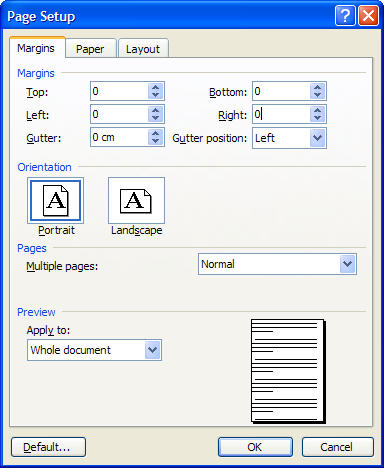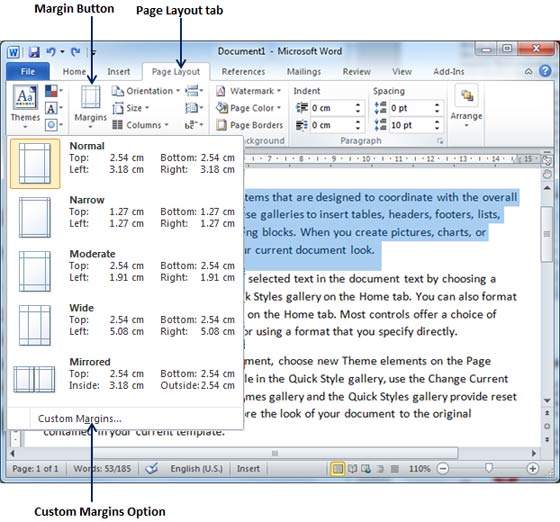

The specified report is now set up to print to the selected printer. Different users on different computers may see different options. The list of available printers is generated from the printers that are currently installed. In the Printer Name field, select from the list of available printers. The Report Name field is automatically populated with the report name. In the Report ID field, select the ID of the report to print. In the User ID field, select whether the printer selection applies to a specific user. On the Home tab, in the New group, choose New to add a printer selection for a specific report.
#HOW TO CHANGE DEFAULT PRINTER SETTINGS IN WORD 2013 WINDOWS#
In the Microsoft Dynamics NAV Windows client, in the navigation pane, choose Departments, choose Administration, choose IT Administration, choose General, and then choose Printer Selections. To set up printer selections for a report Print a specific report to a specific printer for a specific user Specify a value in the Report ID field and leave the Printer Name and User ID fields blank. Print a specific report to the user’s default printer Specify a value in the Printer Name field and leave the User ID and Report ID fields blank. Specify values in the User ID and Printer Name fields and leave the Report ID field blank. Print all reports to a specific printer for a specific user

Specify values in the Report ID and Printer Name fields and leave the User ID field blank.

Print a report to a specific printer for all users The following table describes the combination of values to specify when you set up printer selections for a report. This printer selection takes precedence over a printer selection that has blank entries in the User ID or Report ID fields. For example, you can set a printer selection that has values in the User ID, Report ID, and Printer Name fields. If you set a specific printer selection, then it takes precedence over a more general printer selection. You can set different values to obtain different output. When you start a session by using the STARTSESSION Function (Sessions), which does not have a UI, you can print reports from the server. You can print reports on the default printer of a specified employee. You can print reports on different paper sizes. You can print reports on special company letterhead. The following are some uses of printer selection: If you are using Word 2016 for Mac, go to /Users/ username/Library/Group Containers/UBF8T346G9.You can set up reports so that they must be printed on a specific printer from the Microsoft Dynamics NAV Windows client. In the Open dialog box, browse to the folder that contains the Normal.dotm file. If you open Normal.dotm from the Finder, Word will create a new blank document based on the template. To make changes to Normal.dotm, you must open the file from Word. You can customize the Normal template and change default settings for many aspects of a document, such as text formatting, paragraph formatting, document formatting, styles, text, pictures, AutoText entries, and keyboard shortcuts. On the Format menu, click Document, and then click the Layout tab.Ĭhange other default settings in the Normal template For example, the layout attributes for new blank documents are based on the Normal template. On the Format menu, click Document, and then click the Margins tab.Ĭhanging the default layout in any template means that the section breaks, headers and footers, and other layout attributes are used in every new document that is based on that template. For example, the margins for new blank documents are based on the Normal template. Make any changes that you want, and then click Default.Ĭhanging the default margins in any template means that the margin settings are used in every new document that is based on that template. On the Format menu, click Font, and then click the Advanced tab. For instance, the company name you entered when you first installed Word is actually stored in the Word program file. Open the template or a document based on the template whose default settings you want to change. Understand that when you make all these changes, there are still a couple of settings that can then only be changed by a complete reinstall. For example, the character spacing for new blank documents is based on the Normal template. Changing the default font also changes the Normal style, which affects any other style that is built on the Normal style.Ĭhanging the default character spacing in any template means that the settings for scale, spacing, position, kerning, and other typographic features are used in every new document that is based on that template. Note: Most of the styles in Word are based on the Normal style.


 0 kommentar(er)
0 kommentar(er)
